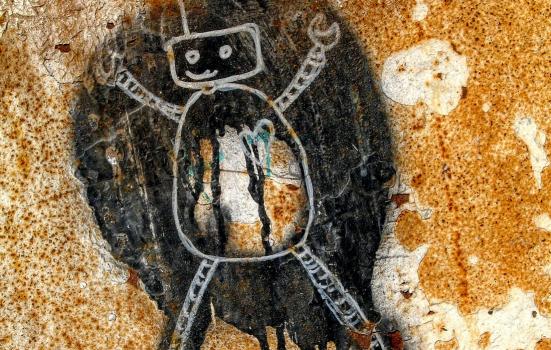Anthony Padgett says artificial intelligence has a role in selecting, curating and even creating art, but the sector must define that role – and join the debate early, before others take control.

One frustration in applying for arts opportunities is that selectors often consider feedback about artworks to be too time consuming. Most artists and curators I have spoken to regard systems of categorising art as restricting freedom. Yet frameworks can justify choices and give a level of transparency that is currently lacking.
Frameworks for decisions can be made transparent in artificial intelligence systems, helping to make feedback simple, accountable, and fair. A database of artists and why their work is good can only improve the industry.
Brushstroke biography
Led by Dr. Ahmed Elgammal, AI designed by a group of programmers has already sorted 77,000 Wikiart images of paintings into historical order based on formal qualities and without any prior knowledge of that historical order. And South Korean scientists have created an algorithm to determine whose work, out of 19 composers, was the most original.
AI is also being used to determine differences in style based on brushwork. Researchers from Rutgers University and the Atelier for Restoration and Research of Paintings in the Netherlands used a system to break down almost 300 drawings by Picasso, Matisse, Modigliani, and other famous artists into 80,000 individual strokes. Then a deep recurrent neural network (RNN) learned to identify the artists based on what features of the brushstrokes were important to their work.
Such technology is being harnessed to detect fakes and protect investments; however, it needs harnessing to promote artists’ originality and intellectual property.
AI as art
AI can make artworks. For example, Elgammal created a number of paintings by computer that were evaluated by humans to be indistinguishable from the work of professional artists.
These works tend to be quite abstract and AI is still unable to provide complex representational images. These systems learn about the history of art in the process of creating it, but they don’t have any semantic understanding. They know nothing of subject matter, concepts, elements, or principles of art. However, the development of facial recognition software shows that the generation of representational forms is possible. From this, more narrative art could be created.
Systems of fairness
Such systems for the creation of art can also be systems of categorisation of art and could be used to say why works are or are not selected.
Systems first determine the formal qualities and style of a work of art and then its subject, narrative, political and social meanings. Such systems can have variables, such as originality, women artists, Black artists, what millionaires buy, what the public like, and what academics like. Alternative art histories will be possible at the touch of a button. For this to be developed we need leaders who seek equality and transparency.
However, if artists are not also given access to AI curating then galleries, investors or governments might end up with full control of these systems. AI regulation could remove the power bases of collectors, dealers, and artists, destroy false reputations, deflate over-inflated prices, and enable social mobility. Sympathetic curators, dealers and artists should join the debate early – or risk being excluded from it.
Ways forward
While we wait for systems of analysis to develop, artists can begin to build the datasets that they will use. Open source wikis allow artists to upload works and create an alternative knowledge bank to sites like WikiArt and eHive. Currently though, there is no universal art depository.
Marnie Benney, Head Curator, Chief Technology Officer Pete Kistler, and their selected artists at AIArtists.org are interested in general ethical questions around dataset challenges. They consider how we can prevent certain populations from being marginalised or discriminated against by AI, and how to document and monitor for bias in AI systems. There is a danger of discrimination becoming systematised in art programs with datasets of the art of minorities being excluded. We must consider what datasets may be missing that are holding back our human potential.
UNESCO has recognised the cultural significance of AI with a 2020 public consultation. I made my view heard in this, saying that AI can be used in a positive way to improve transparency and accountability in the way art is selected. But care must be taken in designing the parameters for determining what is a good work of art, and in the datasets used to select art.
Different parameters create different ideas of what is good art. Inclusive datasets allow the work of artists from diverse backgrounds to be fairly evaluated. We should all watch this cyberspace and help it to develop.
Anthony Padgett is the author of Art, Unions, Artificial Intelligence and Money




